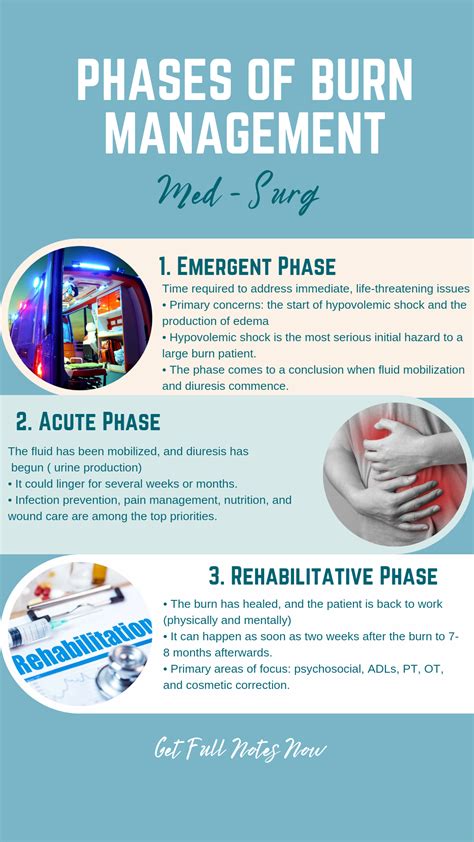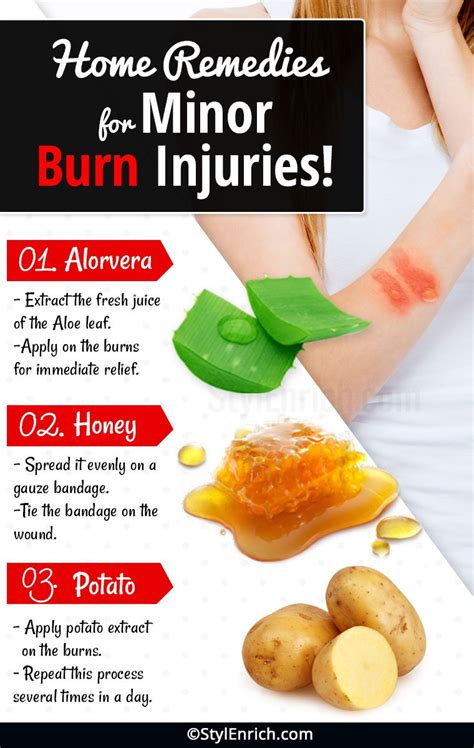Intro
Discover effective home remedies for burns, including natural treatments like aloe vera, cool compresses, and honey, to soothe and heal minor burn injuries quickly and safely.
Burns are a common household injury that can be painful and potentially serious if not treated promptly and properly. While medical attention is often necessary for severe burns, there are several home remedies that can help alleviate the pain and promote healing for minor burns. In this article, we will explore the importance of proper burn care, the benefits of home remedies, and provide a comprehensive guide on how to treat burns at home.
Burns can occur due to various reasons such as scalds from hot liquids, contact with open flames, or electrical accidents. According to the American Burn Association, approximately 450,000 people in the United States receive medical treatment for burns each year. While some burns require immediate medical attention, others can be treated with simple home remedies. It is essential to understand the severity of the burn and take appropriate action to prevent further damage and promote healing.
The severity of a burn is classified into three categories: first-degree, second-degree, and third-degree. First-degree burns affect only the outer layer of the skin and are characterized by redness, swelling, and pain. Second-degree burns extend to the second layer of skin, causing blisters, and third-degree burns damage the deepest layer of skin, often requiring surgical intervention. For minor burns, such as first-degree and some second-degree burns, home remedies can be an effective way to manage pain, reduce inflammation, and promote healing.
Understanding Burn Care

Benefits of Home Remedies
Home remedies for burns offer several benefits, including reduced pain, inflammation, and scarring. Many natural ingredients, such as aloe vera, honey, and coconut oil, have antibacterial and anti-inflammatory properties that can help promote healing and prevent infection. Additionally, home remedies can be a cost-effective and accessible alternative to medical treatment, especially for minor burns.Home Remedies for Burns

Steps to Treat Burns at Home
Treating burns at home requires careful attention to the affected area and a gentle approach to promote healing. Here are the steps to follow: 1. Stop the burning process by removing the heat source and cooling the affected area with cool tap water or a cool compress. 2. Clean the affected area with mild soap and lukewarm water. 3. Apply a topical antibiotic ointment to prevent infection. 4. Cover the affected area with a non-stick bandage or dressing. 5. Take over-the-counter pain medication, such as acetaminophen or ibuprofen, to manage pain and inflammation.Preventing Infection

When to Seek Medical Attention
While home remedies can be effective for minor burns, it is essential to seek medical attention for more severe burns or if you experience any of the following symptoms: * Difficulty breathing * Burns to the face, hands, or feet * Burns that cover a large area of the body * Burns that are deep or have exposed tissue * Fever or chills * Increased redness, swelling, or pus around the affected areaConclusion and Next Steps

We encourage you to share your experiences with home remedies for burns in the comments section below. If you have any questions or concerns, please do not hesitate to ask. Additionally, if you found this article helpful, please share it with your friends and family to help spread awareness about burn care and prevention.
What are the most common causes of burns?
+The most common causes of burns include scalds from hot liquids, contact with open flames, and electrical accidents.
How can I prevent infection when treating burns at home?
+To prevent infection, keep the affected area clean and dry, avoid touching the affected area with unwashed hands, and avoid breaking blisters.
When should I seek medical attention for a burn?
+Seek medical attention if you experience difficulty breathing, burns to the face, hands, or feet, or if you notice signs of infection, such as increased redness, swelling, or pus.
